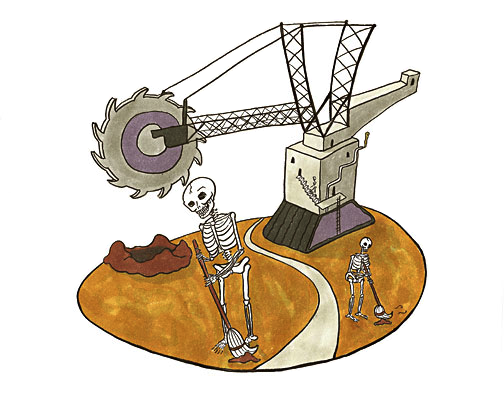When you purchase jewelry made from Fairtrade Gold, you provide a huge benefit to local communities, especially when compared to large-scale mining operations.
Globally, small-scale mining operations provide about 20% of the world’s gold supply, but makes up 90% of the world’s gold mining labor.
While large-scale mining companies do provide higher-paying jobs than small-scale mining, they are few. They are also often highly skilled, making them inaccessible to local community members that typically have limited access to the education required for these jobs.

The overall objective of these large operations is to extract as much money from the project as possible in order to enrich shareholders. The focus is on speed and efficiency, not community wealth and empowerment.
Small-scale mining, on the other hand, is human scale, slow, and highly localized. Unlike large-scale mines, it employs entire communities. The jobs do not require a high degree of technical skill. In fact, Fairtrade Gold mining is a great job generator because small-scale mining is, by its nature, labor intensive. It’s often done with shovels and picks.
The average woman or man with a shovel might move a ton of earth a day. While a large-scale gold mine might produce over a hundred kilos of gold a day, a small community of forty to sixty miners might produce a half kilo to a kilo of gold over the course of one month.
Wages generally will not be as high for small-scale miners as those working in large-scale mining operations. Yet profits are not exported to enrich shareholders who are rarely concerned with anything other than the bottom line.
With Fairtrade Gold, the money and profits earned stay in the community through wages paid to the workers.
Compared to large-scale industrial mining, small-scale Fairtrade mining provides a slower economic model for extraction that offers the opportunity for greater local long-term economic strength and growth.
Some of the small mines that I visited in Africa might produce only a kilo of gold a month because processes are not as mechanized. Large equipment, even a backhoe, can be far too expensive to utilize.
Due to the lack of this equipment the mines need many people to operate them. The labor brings in revenues that are equally distributed among more than just a few. Additionally, with the Fairtrade premium of $2000 per kilo, which is often used for schools, clinics and elder care, the entire community, as a whole, benefits.
Unlike large-scale mining, which often is unregulated because of cozy relationships with governments, Fairtrade Gold mines have wage and labor issues that are independently audited against a rigorous set of standards. This slow process of small-scale mining with Fairtrade standards ensures that the mineral resources provide a more stable and long-term economic base for communities.
Purchasing Fairtrade Gold jewelry makes a huge difference to the workers in these small-scale mining communities that are mining responsibly and ethically.
*Continue on to the next step in Fairtrade Gold vs Dirty Gold sourcing: Economy. Or return to the previous step: The Environment.
*Return to our Fairtrade Gold vs Dirty Gold Infographic in full.
*Or for more info, see our Ethical Jewelry Exposé: Lies, Damn Lies, and Conflict Free Diamonds.